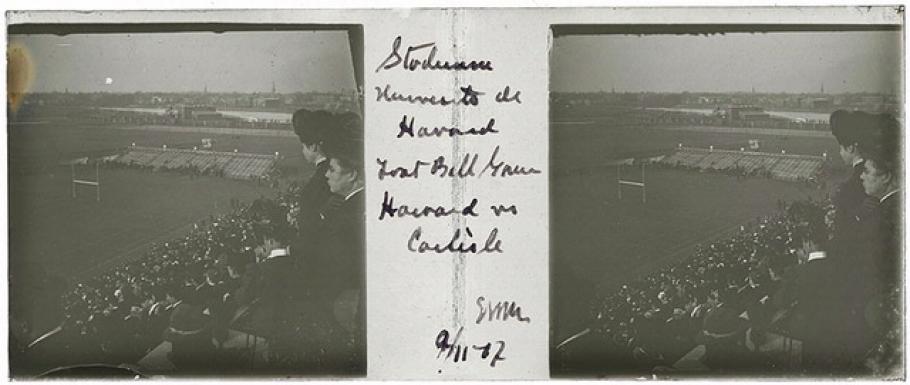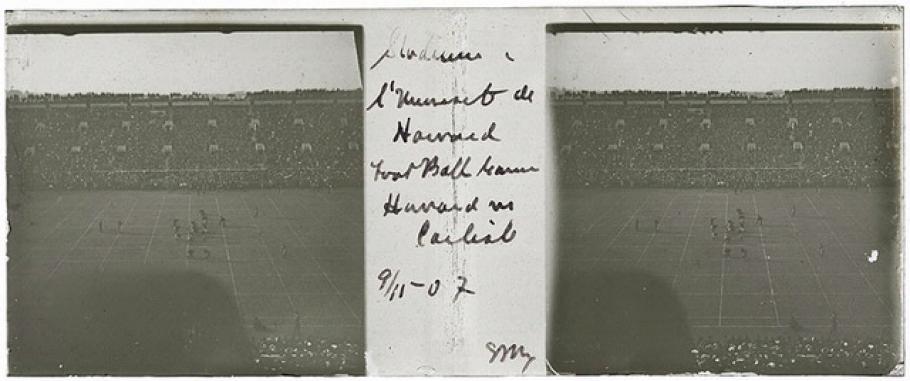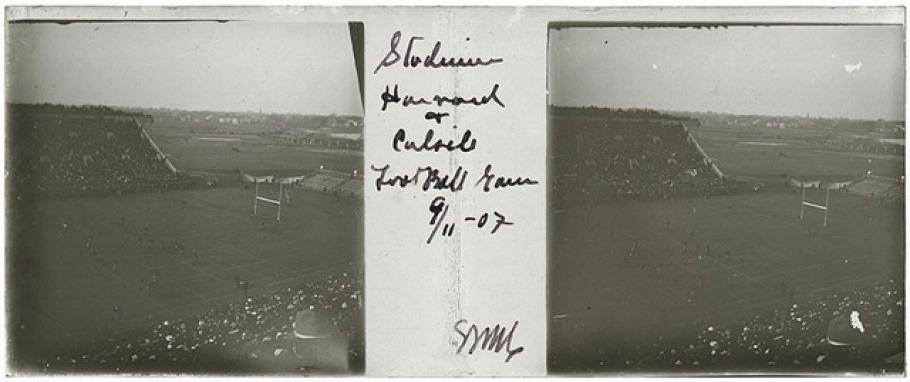On January 15, 1967, the NFL champion Green Bay Packers played the AFL champion Kansas City Chiefs in what would later be known as Super Bowl I. Sixty years earlier, American football looked much different. Helmets resembled aviator caps. Forward passes had been legal for less than a year.
One of the collegiate teams that immediately took advantage of the new forward pass rules was the Carlisle Indian School in Carlisle, Pennsylvania, coached by Glenn Scobey Warner, better known as “Pop.” On November 9, 1907, Carlisle played Harvard University in Cambridge, Massachusetts.
Edgar W. Mix was a spectator at this game. Although American, he spent much of his life in Europe, living in Paris. In 1901, he learned how to fly a balloon. By 1907, he was quite the balloonist, traveling to St. Louis in October to compete in the second annual Gordon Bennett International Balloon Race. In 1909, he was the second American to win the Gordon Bennett, flying from Zurich, Switzerland, to Warsaw, Poland. This win was quite controversial and Mix died under mysterious circumstances two years later.
Mix was also an avid photographer, whose constant companion was his camera. The National Air and Space Museum Archives Department holds the Edgar W. Mix Glass Plate Stereograph Collection, 38 cases of glass slides that could be printed into stereographs (two nearly identical two dimensional images that form a three dimensional image when viewed through a stereoscope). This collection provides a lens into life in prewar Europe and the United States.
From the upper rows of Soldier Field, Mix photographed the 1907 Harvard-Carlisle football game. Harvard had won the previous ten meetings with Carlisle. But as in other recent Carlisle games, Coach Warner utilized a new (though familiar to modern viewers) game plan, including a stop-and-go 85-yard punt return, a quarterback run off a fake handoff, and a solid short and long passing game, taking advantage of the new rules. Carlisle won the game 23-15, prompting jubilant fans to swarm the field and a large impromptu victory parade upon return to Pennsylvania.
Notably, one Carlisle player spend the entire game on the bench—Jim Thorpe. His early playing time with Carlisle was limited due to concerns about his size and value to the track and field team. Thorpe would go on to win All-American honors in 1911 and 1912, two Olympic track and field gold medals in 1912, play professional football and major league baseball, and be known as one of the greatest, albeit controversial, athletes of the 20th century.
There are Carlisle School-related collections and images throughout the Smithsonian Institution. The National Anthropological Archives holds the John N. Choate Negatives, images made by a commercial photographer in Carlisle who often served as a photographer for the Indian School. The Smithsonian Institution Libraries collections include many books on the school and several specifically focus on the football program. Pop Warner and Jim Thorpe were honored on postage stamps, held by the National Postal Museum.
Enjoy the football game today!



